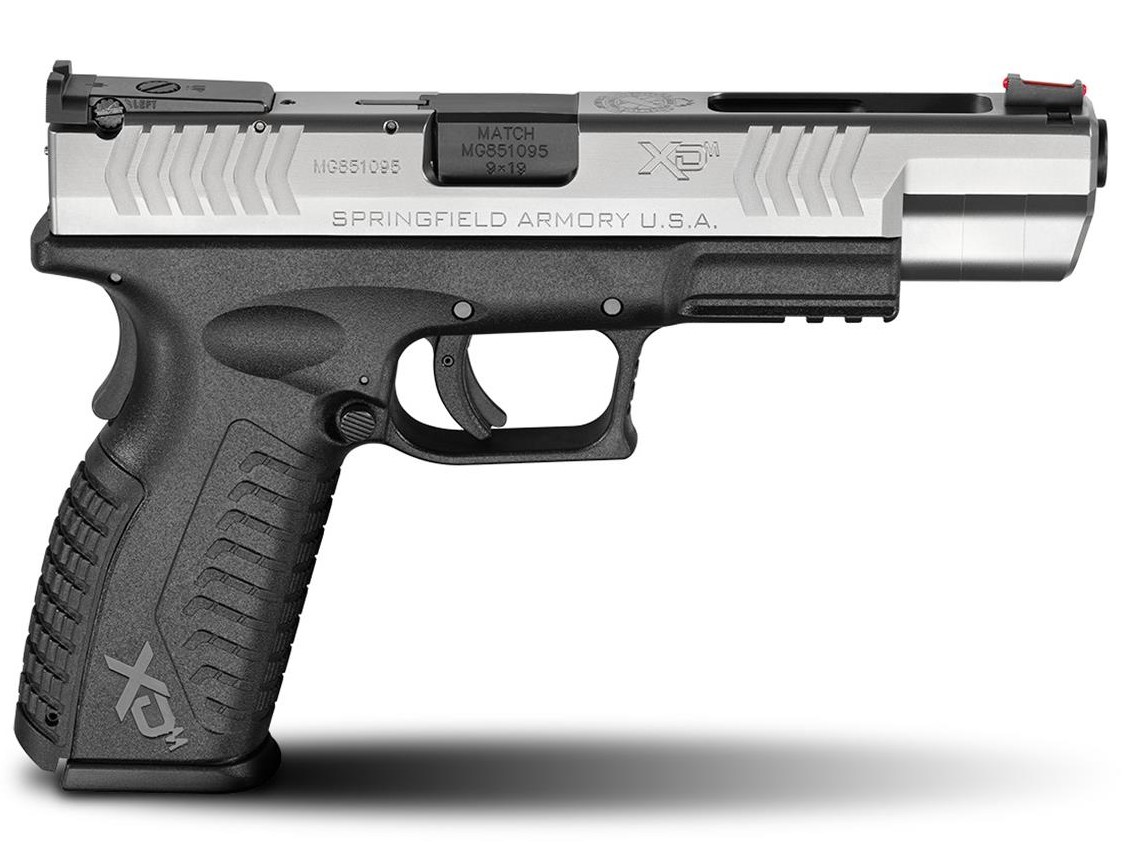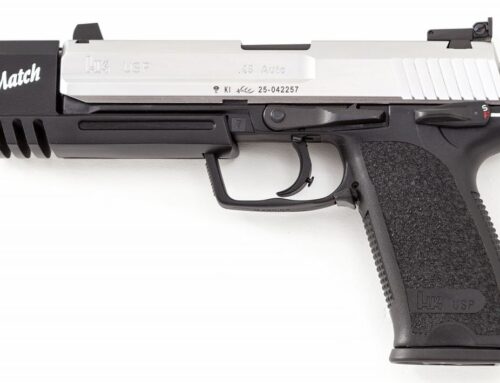With all of the polymer framed striker-fired pistols on the market today it can be difficult to stand out from the crowd. When the original XD came out, really nothing more than a rebranded HS2000 from a Croatian company called HS Produkt from back around 1999, I barely gave it a second thought. The grip safety was a new addition to this segment of firearms and the guns were reliable with high capacity magazines but they fell a little short in the looks department for me and never received a second glance. It wasn’t until the XD-M series rolled out that my interest began to change in a big way.
The model which first claimed my curiosity was the .45 ACP chambered model with a 4.5 inch barrel. Besides having 4.5 and .45 printed on the slide which I thought was rather whimsical these pistols managed to edge out the competition by having both a sleeker and more aggressive look from the first generation and had a feeling of presence while lurking behind the gun counter.
The new XD-M pistols added swappable backstraps to change the grip and really went in with the angular design cues with chevron shaped slide serrations and grip texturing which looked more like a tire tread than any form of stippling. The grip safety, ambi mag release, loaded chamber indicator, striker indicator and trigger safety remain from the originals but the Picatinny-like frame rail grew to have more mounting slots over the earlier generation. I say Picatinny-like as the dimensions are not identical to the military standard, featuring a more “condensed” format which works fine with frame accessories and allows more mounting positions within a smaller space.
Over the years the XD line has been offered in a number of calibers. Of course 9mm, .40 and .45 are included but earlier models could also be found in .357 SIG and .45 GAP while XD-M now also offers a 10mm option. While I’d love to get hold of a 10mm sometime this review opportunity gets to focus on the two most popular handgun calibers with a 4.5″ barreled .45 ACP and a 5.25″ barreled two-tone 9mm.
The XD line are one of the first polymer framed handguns I can recall to have had longer grips. When you look at an XD-M in person they’re quite tall and I’ve seen this trend becoming more prevalent over the years. While never caring for the look these longer grips do offer some advantages, the first of which is capacity. The .45 caliber holds an impressive 13 rounds in a mag while the 9mm holds a staggering 19. When these guns first came out there weren’t many other manufacturers offering such high capacities!
The other benefit of a longer grip is giving your off-hand some extra real estate which I suspect plays into what makes the XD-M pistols shockingly easy to control. By having a longer grip and a small lip from the magazine floorplate your off-hand has a handy little shelf all to itself which lets you really dig in and help combat muzzle flip. Walther had recently begun advertising their PDP pistols as having this feature despite existing on the previous PPQ. While I don’t believe Springfield had specifically labeled this as a feature I’m pretty sure they were among the first to start the trend. With the XD-M it seems to do the trick.
With the smooth recoil impulse and lower bore axis I find that even the .45 is surprisingly easy to control. I can fire a .45 XD-M nearly as quickly as a 9mm and both are dead accurate. This plays into the XD-M name as the barrels are marked “Match,” the “M” part of their name. I’m not sure how they differ from other XD barrels but the M series truly are accurate guns.
The grip sizes differ between the 9mm and .45 but both feel right at home in the palm. Despite not putting thousands of rounds through these pistols they always feel familiar when I pick one up. Those with smaller hands are likely going to appreciate the 9’s more slender profile though the .45 isn’t ungainly by any stretch.
The ambi mag release on these guns are quite slick and can be reached either by trigger finger or thumb and ejection on both is silky smooth. Between brightly polished mag bodies and perfectly smooth polymer magwells there’s nothing for them to catch on. The slide releases are left side only with the XD-M Elite being the exception and I love the way they’re shaped, there’s just enough surface area to drop the slide even with the added tension from an empty mag. At the range they’re very quick to use and for my hands the release is placed in the most ideal location just ahead of the thumb’s joint where you can get a lot of power.
The one area where the XD-M falls a little short is the trigger. By no means bad, the polymer on polymer construction does lend to a mushy feeling throughout travel. Initial take-up is a little on the stiff side and feels plasticy. Once you find the shelf there’s a little more to pull with the break being somewhat difficult to predict, often coming before I expect it to. There’s virtually no over-travel but it is a fairly long pull. It doesn’t reset right at the break so you’ll need to draw up some slack between shots.
The XD series has great aftermarket parts and trigger support and for competitive use this might be one of the first components you would be looking into. That said, I view these as primarily service or duty sidearms and in these roles the factory trigger is quite good. It may not sound great when described but when I’m at the range the factory setup just works and I can quickly drill out bullseyes at thirty feet with either caliber. My issue with predicting the break may be working to its advantage as I’m less likely to anticipate recoil. Less seasoned shooters seem to do quite well with the XD-M series as well. I’d be perfectly happy with keeping the trigger stock.
While the XD-M gets extremely high marks from me there is one area which can be quite bothersome. At the top back of the frame is a roll pin which holds in the grip safety. When handling these pistols you won’t think anything of it. When shooting them this tiny, insignificant feeling detail can sometimes feel like sandpaper. They’ve worn skin off more than once, particularly with the .45’s additional bite. While this can be bothersome it isn’t enough to turn me away from the platform, although I do wonder about finding something to fill that space in with.
The entire XD lineup has been doing quite well for itself with multiple generations and variations. Following the original there’s the Mod.2 which I think is mostly a visual update from the first generation, the XD-M, the single stack XD-S, the XD-S Mod.2, the XD-E which is a single stack with an external hammer, and the XD-M Elite with an updated trigger and flared magwell adapter. Many can also be found in different configurations between slide and grip length, standard or adjustable sights, and longer or shorter slides. Newer models can also be found with optic mounts.
One unfortunate discovery upon looking at Springfield Armory’s website is that the XD-M both do not appear to be offered in stainless two tone finishes any longer and can only be had in .45 ACP and 10mm. The 9mm now lives on with the XD-M Elite configurations. Additionally, the first gen XD-S and XD Mod.2 both seem to be out of production. Curiously the first gen XD is still being offered including stainless slide options.
As a nine millimeter within a saturated market the Springfield XD-M is a very good gun but for me it’s the ACP which wins out as the one .45 to rule them all. The grip shape and proportions, the accuracy, the ease of returning to target, the thirteen round capacity, it’s all there. Other than some potential wear and tear on your shooting hand these guns do it all and they do so consistently well.








